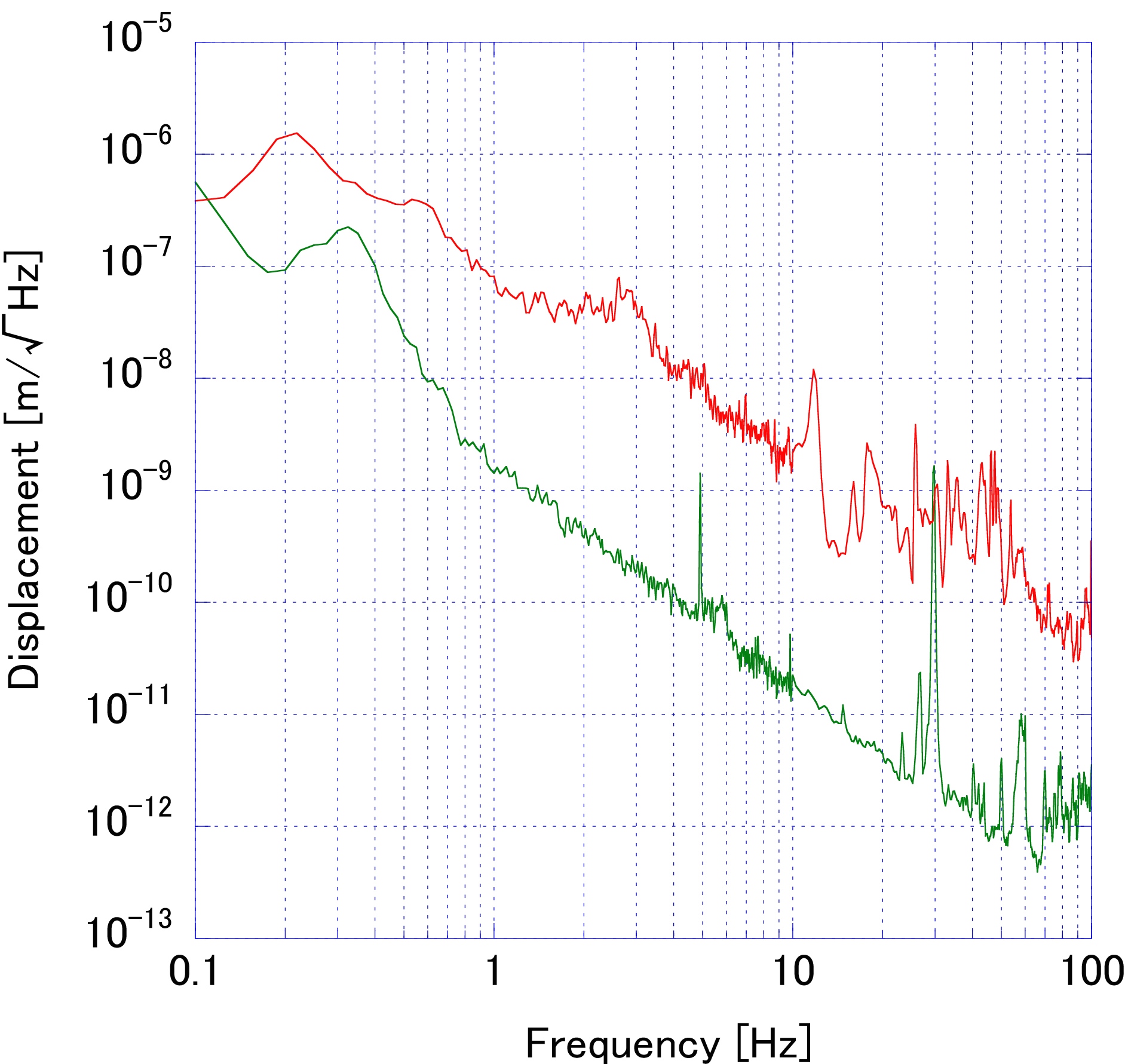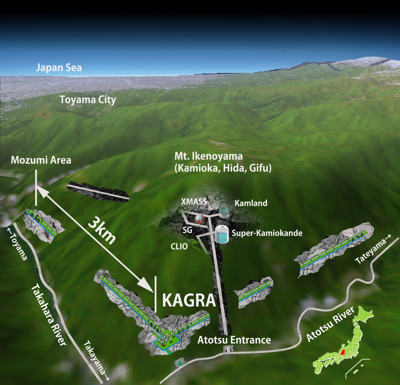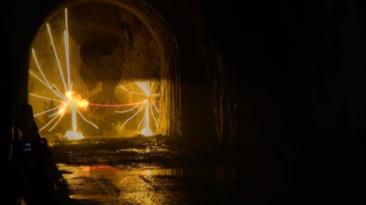Excavation of KAGRA’s 7 km Tunnel Now Complete
Excavation of KAGRA’s 7 km Tunnel Now Complete
March 31, 2014
On March 31, 2014, the team of the Large-Scale Cryogenic Gravitational Wave Telescope (KAGRA) completed the excavation of its L-shaped tunnel with two 3 km arms. Including two access tunnels, a total length of 7,697 m has been hollowed out 200 m below the surface of Mt. Ikenoyama in Kamioka—beside the site of Super-Kamiokande—where the construction of a 3-km-scale cryogenic interferometer will soon begin. This interferometer has been designed to directly detect gravitational waves for the first time ever.
KAGRA is an international project involving 231 scientists from 31 institutions, principally operated by ICRR(Institute for Cosmic Ray Research) with two main joint-research institutions, KEK (High energy accelerator research organization) and NAOJ (National Astronomical Observatory). Its aim is to construct 3-km-scale Fabry-Perot Michelson Interferometer underground at Kamioka to detect gravitational waves. Gravitational waves, derived from Einstein’s general theory of relativity, are ripples in the curvature of spacetime that propagate at the speed of light. The first indirect proof of their existence was proposed by Dr. Hulse and Dr. Taylor in 1974 who found a binary system of neutron stars, whose decrease in orbital period was well described by the loss of energy through gravitational radiation. In addition, the astronomers of the BICEP2 experiment at the South Pole recently reported that they had found the signature of primordial gravitational waves imprinted in the B-mode polarization of the Cosmic Microwave Background—further evidence of gravitational waves if confirmed. However, gravitational waves have yet to be detected directly in a form in which their waveforms are evident. The direct detection of gravitational waves will not only validate our understanding of gravity and spacetime but also open up a whole new field of gravitational wave astronomy by enabling the physics of strong gravitational fields to be tested, and enabling direct observations of mysterious objects such as black holes, which are not possible through the observation of electromagnetic waves.
Gravitational waves manifest themselves as extremely small changes in the distance between two points in spacetime. Direct gravitational wave detectors therefore detect a change in the metric. However, even the strongest gravitational waves produced during the merger of binary neutron stars and binary black holes typically cause a variation of length of the size of a hydrogen atom over the distance between the Earth and the Sun. Furthermore, such mergers occur once every 100,000 years in our Galaxy. KAGRA aims to increase the detection frequency to several times per year by employing an ultra high-sensitivity metric-variation detector (that can detect change of one part per trillion of trillion) to expand the observation range to include many galaxies. The key to a successful gravitational wave detector is to minimize background noises such as seismic noise and thermal noise to achieve extremely high sensitivity limited only by the quantum noise of the laser used in the interferometer. KAGRA will be constructed 200 m underground to reduce seismic noise to a hundredth of that at the ground surface, and its mirrors that reflect lasers back and forth will be cooled to temperature of 20 K to reduce thermal noise. KAGRA’s quiet underground environment under Mt. Ikenoyama—also known for its lithological characteristic of hard Hida gneiss rock—is now, after 20 months of excavation, ready to host the world’s most sensitive gravitational wave detector.
KAGRA’s construction started in 2010. The L-shaped tunnel with two 3 km arms and two access tunnels is located 200 m under the surface of Mt. Ikenoyama and has a slope of 0.3% to drain spring water effectively. A construction company, Kashima, started to excavate the access tunnels from the Mozumi area in May 2012, and from the Atotsu area in June 2012. After the excavation of central laboratory area near the Atotsu entrance, the crew split into two groups; one working on the “X-arm”, which extends 3 km in the east-northeast direction, and the other working on the “Y-arm”, extending in the north-northwest direction. The Mozumi crew continued to excavate from the other end of the Y-arm up to a distance of 1,165 m, where they stopped to deal with a possible abnormal amount of spring water at the fault. In December 2013, the Y-arm was finally blasted open from the Atotsu side. Following the completion of the Y-arm, the X-arm continued to be extended from one direction and was completed on March 31, 2014. The full excavation length is 7,697 m. During the construction, no serious lithological issues arose; however, on several occasions an unexpectedly large quantity of spring water hampered smooth operations during the excavation period. Kashima coped with such problems efficiently and professionally, even breaking the national record for the excavation speed by the NATM method, achieving a rate of 359 m per month.
The collaboration plans to install laboratory facilities and the detector components in the coming fiscal year, in preparation for the initial operation at the end of 2015. The full-scale operation is planned to start in JFY2017.
Media Contact for Further Inquiries
PR Office: Misato Hayashida
TEL: 04-7136-5148
E-mail: misato@icrr.u-tokyo.ac.jp
Attachment
http://www.icrr.u-tokyo.ac.jp/public_relation/press_release/2014/20140331kagra/kagra_en.zip
This announcement are reported in home pages in The University of Tokyo (UT), High energy accelerator research organization (KEK), and National Astronomical Observatory Japan (NAOJ).
UT : http://www.u-tokyo.ac.jp/public/public01_02_j.html
KEK : http://www.kek.jp/ja/NewsRoom/Release/20140331150000/
NAOJ :http://tamago.mtk.nao.ac.jp/spacetime/KAGRA_tunnel_j.html
Fig1. The red line shows the seismic vibration level at the ground (Kashiwa Campus) and the green line shows that of 1,000 m underground at Kamioka (CLIO). It has been shown that the seismic vibration level at 200 m below the mountain surface is nearly the level shown in green.

Fig 2. A bird’s eye view of the Large-Scale Cryogenic Gravitational Wave Telescope (KAGRA), an L-shaped laser interferometer with two 3 km arms.

Fig 3. A panorama photo taken in December 2012 at the central branching point near the Atotsu entrance.

Fig 4. KAGRA’s Y-arm that extends from the Atotsu side to the Mozumi side was blasted open in December 2013.


